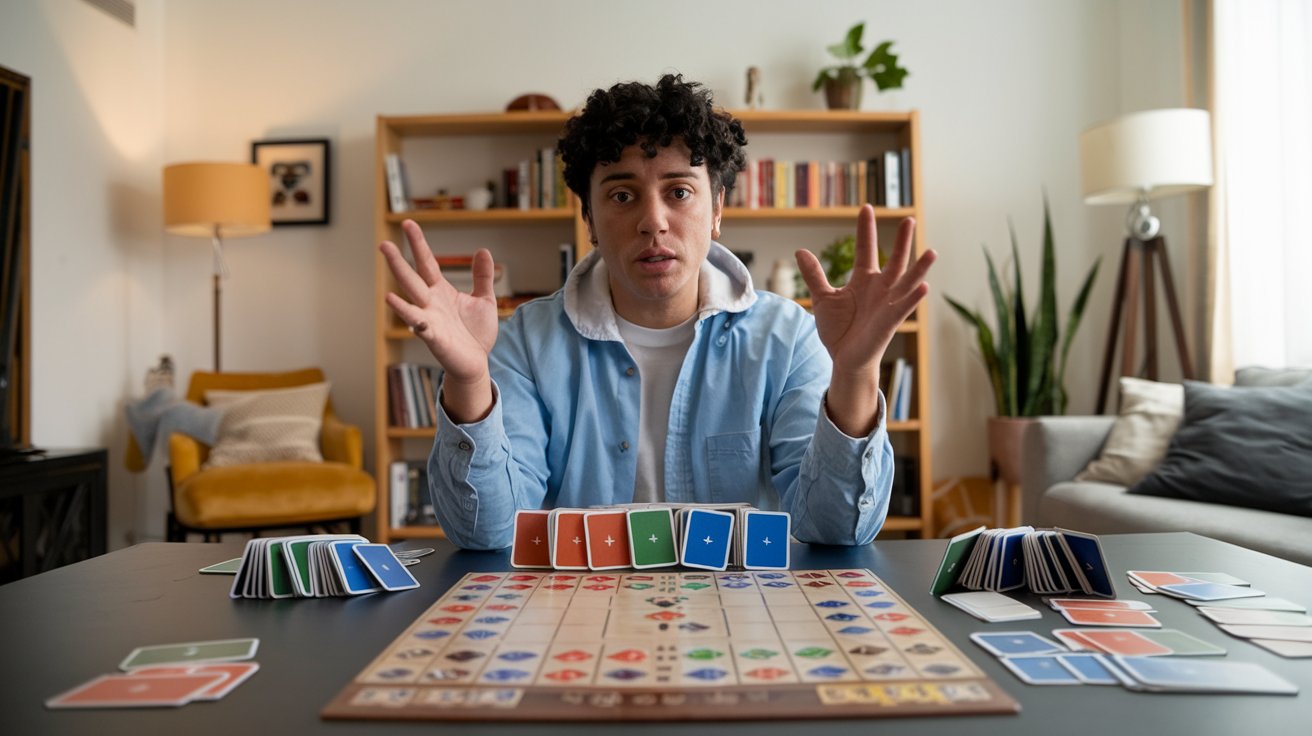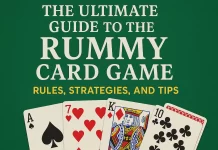Card-based strategy games are a thrilling blend of intellect, creativity, and a dash of luck, captivating players across tabletops and digital screens alike. Whether you’re commanding armies in Magic: The Gathering, battling foes in Hearthstone, or climbing perilous heights in Slay the Spire, your success hinges on one critical skill: deck-building. This 1500+ word guide will teach you how to play card-based strategy games like a pro, reveal the best deck-building techniques, and equip you with strategies to outwit your opponents. Ready to shuffle up and dominate? Let’s dive into the art of the cards!
What Are Card-Based Strategy Games?
At their core, card-based strategy games challenge you to use a deck of cards as your arsenal, wielding them to achieve victory through combat, resource management, or clever combos. The genre splits into two main flavors:
- Collectible Card Games (CCGs): Titles like Magic: The Gathering and Hearthstone let you build decks from a vast card pool before matches, offering endless customization.
- Deck-Building Games (DBGs): Games like Dominion and Slay the Spire start you with a basic deck that you enhance during play, adapting on the fly.
In both styles, your deck is your lifeline—your strategy distilled into a stack of cards. Mastering these games means understanding their mechanics, crafting a killer deck, and playing it with finesse. Let’s break it down.
The Basics of Card-Based Strategy Games

Before we get to deck-building, let’s cover the fundamentals that drive these games.
Key Components
- Deck: Your pool of cards, shuffled and drawn from throughout the game.
- Hand: The cards you hold, ready to play when the moment’s right.
- Resources: Mana (Magic), gold (Dominion), or energy (Slay the Spire)—the fuel for your plays.
- Win Condition: Varies by game—drain an opponent’s life, score points, or complete a quest.
Gameplay Flow
Most card-based strategy games follow a turn-based rhythm:
- Draw: Pull cards from your deck to refresh your options.
- Play: Spend resources to deploy units, cast spells, or trigger effects.
- Resolve: Watch your moves unfold, then pass the turn.
The Goal
Victory isn’t just about drawing the right card—it’s about building a deck that maximizes your strengths and exploits your opponent’s weaknesses. Let’s see how to get there.
How to Play: A Beginner’s Guide
Here’s a step-by-step roadmap to playing card-based strategy games, with deck-building as the beating heart.
Step 1: Learn the Rules
Each game has its quirks—Magic uses lands for mana, Hearthstone auto-generates it, and Dominion skips combat for engine-building. Start with the tutorial or rulebook to grasp the basics.
Step 2: Craft Your Starting Deck
- CCGs: Pre-build your deck to a minimum size (e.g., 60 cards in Magic, 30 in Hearthstone). Pick a strategy—fast aggression, slow control, or wild combos.
- DBGs: Begin with a starter deck (e.g., 10 cards in Dominion) and upgrade it during play based on what’s available.
Step 3: Kick Off the Game
Early turns are about setting the stage:
- Play Cheap Cards: Establish a presence without burning all your resources.
- Conserve Power: Hold back for bigger plays—don’t overextend.
- Watch Your Foe: Their opening moves reveal their plan—adjust yours.
Step 4: Build and Adapt
Mid-game is where your deck takes shape:
- Cycle Key Cards: Draw your best stuff by thinning weak cards (more on this later).
- Counter Threats: Use removal or disruption to stall their strategy.
- Ramp Up: Stack synergies or resources for a decisive push.
Step 5: Finish Strong
Late-game is your moment to shine:
- Unleash Power: Drop your heavy hitters or trigger your combo.
- Handle Bad Luck: If draws falter, play defensively until you recover.
- Close It Out: Time your final blow—don’t give them a comeback chance.
Best Deck-Building Techniques

Deck-building is where strategy meets creativity. Here are the top techniques to craft a winning deck.
1. Nail Your Win Condition
Every deck needs a purpose:
- Aggro: Swarm with cheap, fast cards to overwhelm early (e.g., Hearthstone’s Face Hunter).
- Control: Outlast with defense and late-game power (e.g., Magic’s Esper Control).
- Combo: Chain cards for a game-ending play (e.g., Slay the Spire’s Poison stacking).
Example: In Dominion, your win condition might be buying Provinces—build a deck that churns gold and actions.
2. Master Your Mana Curve
A balanced “curve” ensures smooth play:
- Low-Cost (1-3): 50-60% of your deck—quick plays for early tempo.
- Mid-Cost (4-6): 25-30%—solid threats or utility.
- High-Cost (7+): 10-15%—game-changers, but don’t overload.
3. Chase Synergy, Not Just Strength
Powerful cards are great, but synergy wins:
- Tribal: Boost same-type cards (e.g., Dragons in Hearthstone, Goblins in Magic).
- Effect Chains: Pair draw with discard payoffs or buffs with cheap units.
- Theme: In Slay the Spire, focus on exhaust cards for the Ironclad to maximize damage.
Pro Move: Test your deck—do your cards amplify each other, or are they a jumbled mess?
4. Trim the Weak Links
A tight deck draws your best cards more often:
- CCGs: Skip filler—every slot should push your strategy. Ditch weak early cards as you refine.
- DBGs: Trash starters (e.g., Estates in Dominion, Defends in Slay the Spire) to streamline.
Example: In Hearthstone, cutting a mediocre 4-drop for a second copy of a key minion boosts consistency.
5. Counter the Meta
Adapt to what’s popular:
- Vs. Aggro: Add taunts, healing, or cheap removal.
- Vs. Control: Pack burst damage or hard-to-answer threats.
- Flexibility: In Magic, a sideboard lets you tweak between rounds—use it.
6. Boost Draw and Resources
Running dry loses games:
- Card Draw: Add cantrips (Magic), card engines (Dominion), or relics (Slay the Spire).
- Ramp: Increase resources—lands, mana rocks, or cards like Innervate in Hearthstone.
- Value: Pick efficient cards that do more for less.
Example: In Slay the Spire, a relic like Unceasing Top with low-cost cards creates an infinite loop.
Playing Like a Pro

A great deck is nothing without sharp play. Here’s how to maximize your strategy.
Read the Room
- Early Tells: A turn-one aggressive drop screams aggro; a slow buildup hints at control.
- Bluffing: Hold a big card to fake weakness, then pounce.
- Scout: In digital games, check their deck or past plays for clues.
Time Your Moves
- Save the Big Guns: Don’t play your finisher into their removal—wait them out.
- Bait: Force their counters with a mid-tier play, then drop the real threat.
- Optimize: In Hearthstone, trade smart; in Dominion, chain for max actions.
Roll with RNG
- Bad Draws: Stall or pivot—don’t panic.
- Random Events: In Slay the Spire, a tough enemy might force a rethink—adapt.
- Stay Cool: Luck swings both ways—focus on your decisions.
Top Card-Based Strategy Games
Here’s a rundown of must-play titles:
Magic: The Gathering
- Type: CCG
- Standout: Deep mechanics and endless card combos.
- For: Strategists who love complexity.
Hearthstone
- Type: CCG
- Standout: Fast-paced and beginner-friendly.
- For: Digital fans wanting quick fun.
Slay the Spire
- Type: DBG
- Standout: Roguelike twists and solo play.
- For: Challenge-seekers who love evolving decks.
Dominion
- Type: DBG
- Standout: Pure deck-building with no combat.
- For: Tabletop lovers who enjoy engines.
Top Tips for Success
- Keep It Simple: Master a basic deck first.
- Test Relentlessly: Play to find flaws—tweak accordingly.
- Know the Pool: Study your game’s cards for hidden gems.
- Learn from Pros: Watch YouTubers or streamers for tricks.
- Enjoy the Ride: Winning’s sweet, but experimenting is half the fun.
Why These Games Hook You
Card-based strategy games are a sandbox for your mind—every deck a new puzzle, every match a fresh challenge. They blend planning with improvisation, rewarding skill while keeping you on your toes with luck. Whether you’re in it to win or just to tinker, they’ve got something for everyone.
Conclusion
Mastering card-based strategy games is about building a deck that sings and playing it with precision. Define your win condition, balance your curve, and adapt to the meta, and you’ll be racking up wins in no time. So grab your cards—physical or digital—and start crafting your legend.
What’s your go-to deck or favorite game? Drop a comment—I’d love to hear your card-slinging tales!

Zareb Saleh is a journalist at Gulf Today and a ghostwriter for Gameoholic, specializing in gaming, technology, and digital culture. With a keen eye for industry trends, he delivers insightful stories that engage and inform readers.




